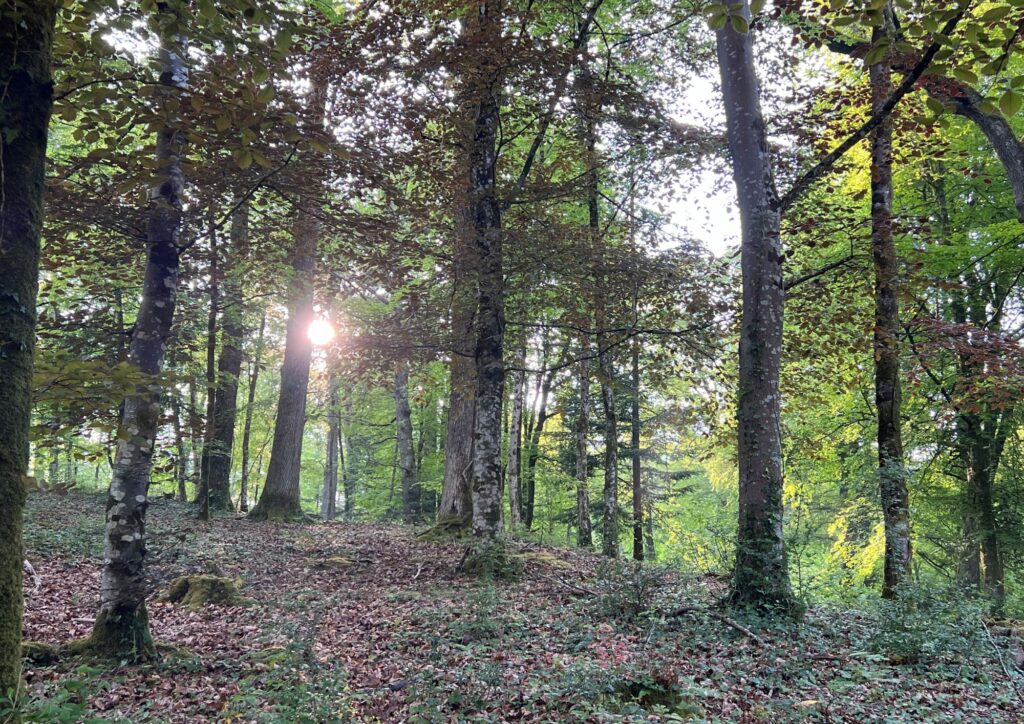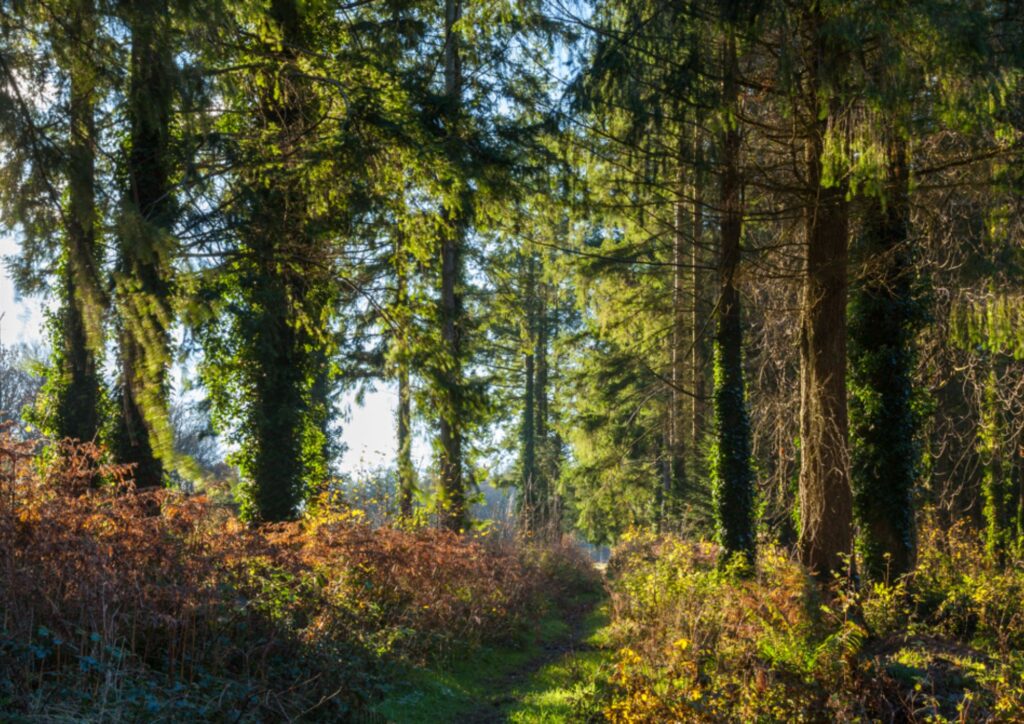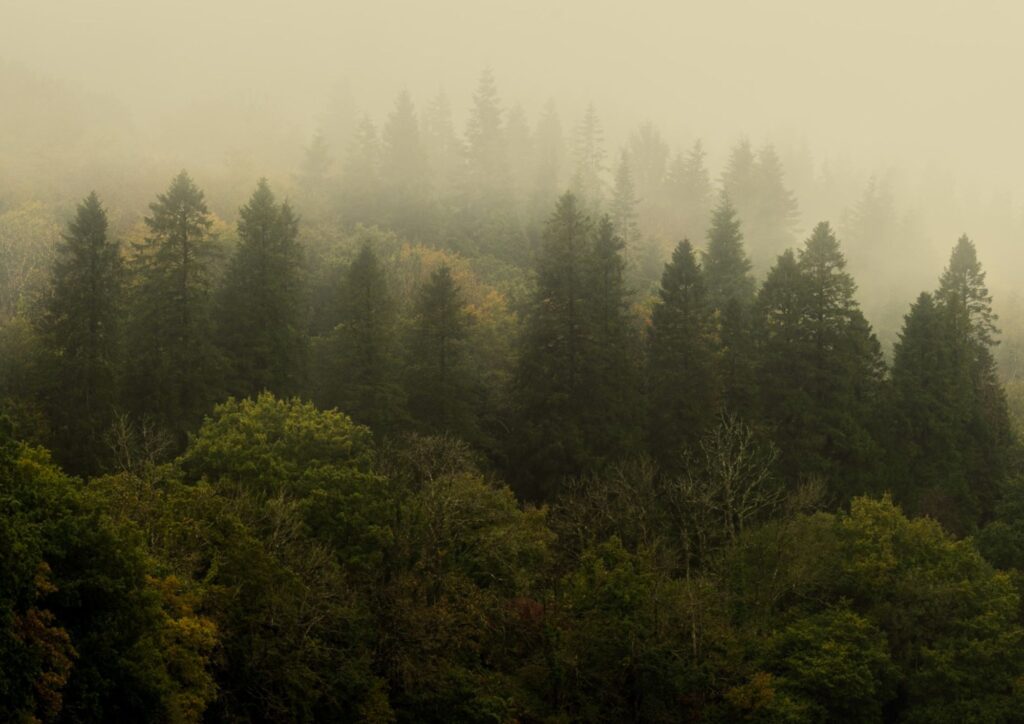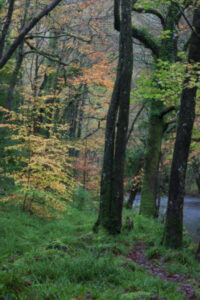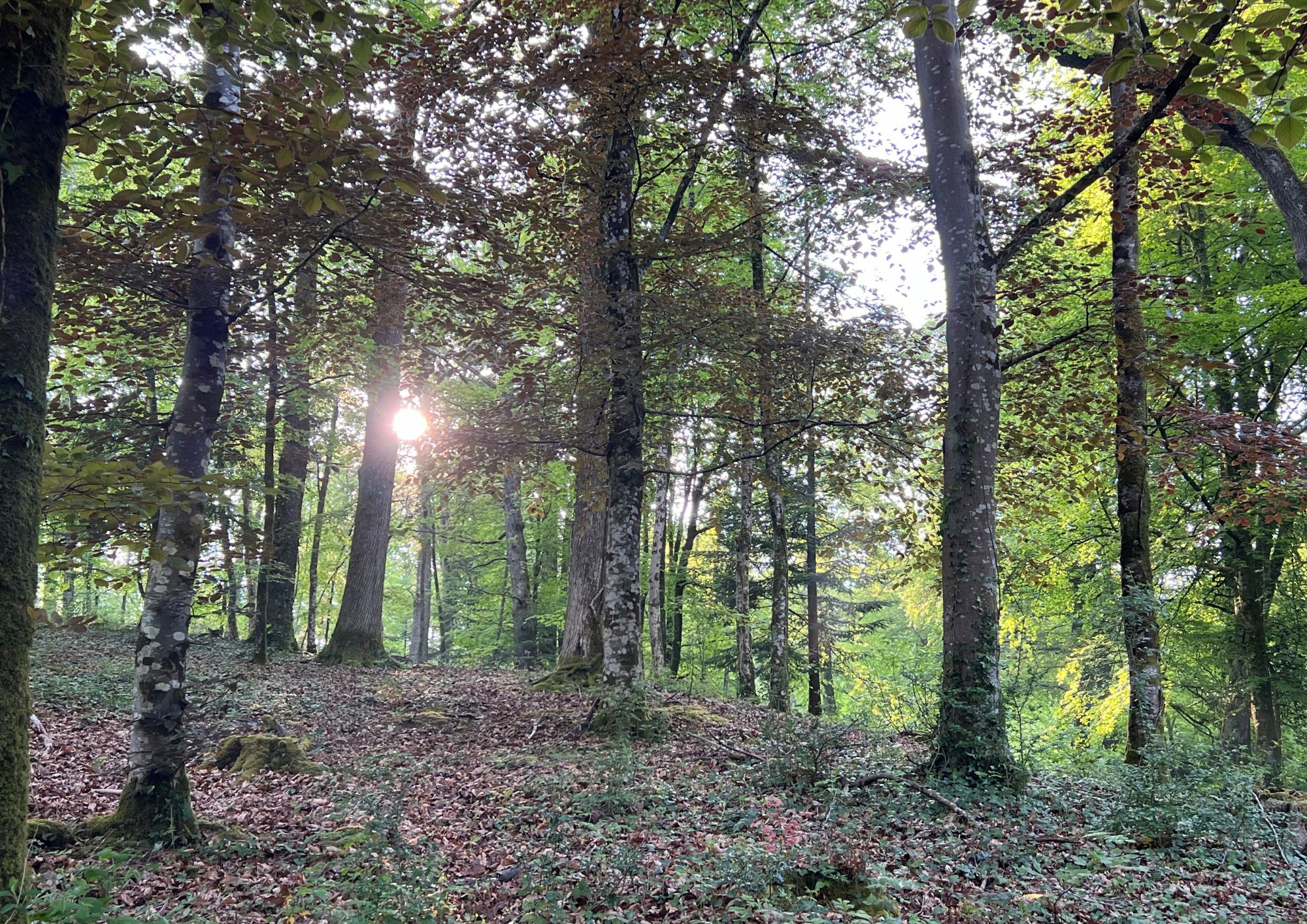What wildlife-rich looks like:
Plantations are managed to provide a diversity of age and structure. This includes lots of standing and fallen deadwood, ancient treesA tree that has reached a great age compared to others of the same species and has cultural, landscape or biodiversity value. Ancient trees are veteran trees, but not all veteran trees are old enough to be ancient. More, leaf litter, open and sunny flower-rich areas, wetlands and areas of dense scrub. Clear fell areas provide habitat for ground nesting birds such as nightjars.

